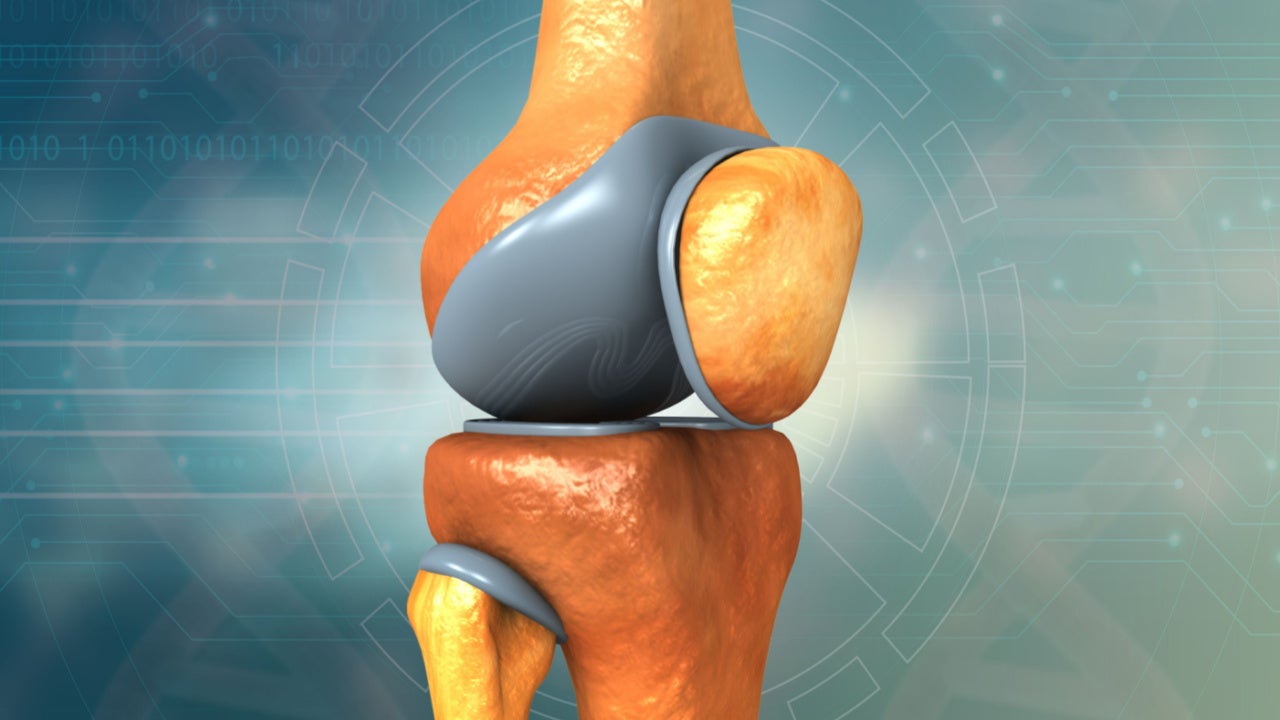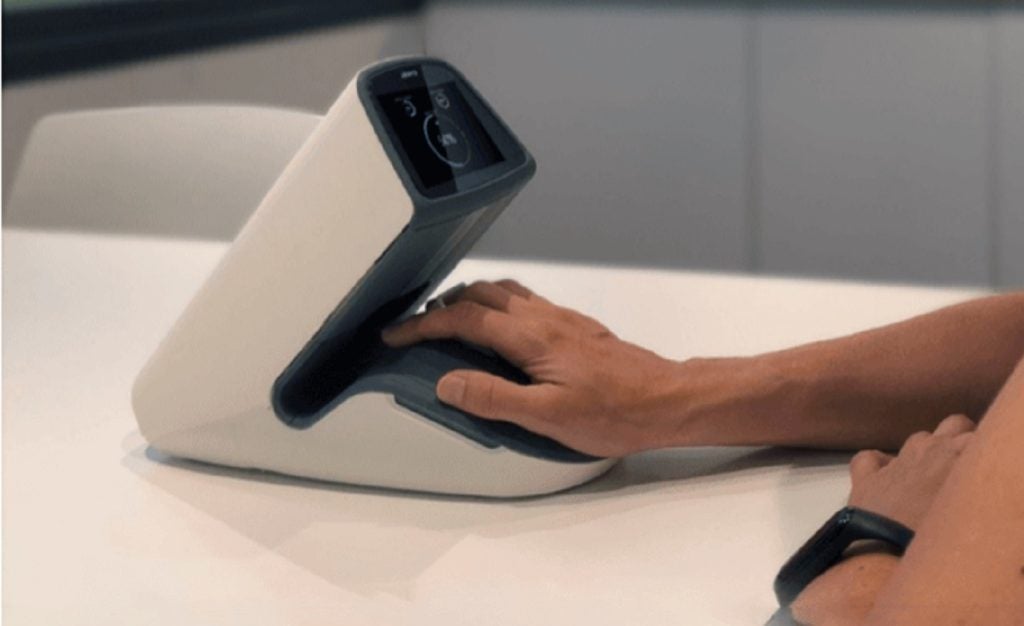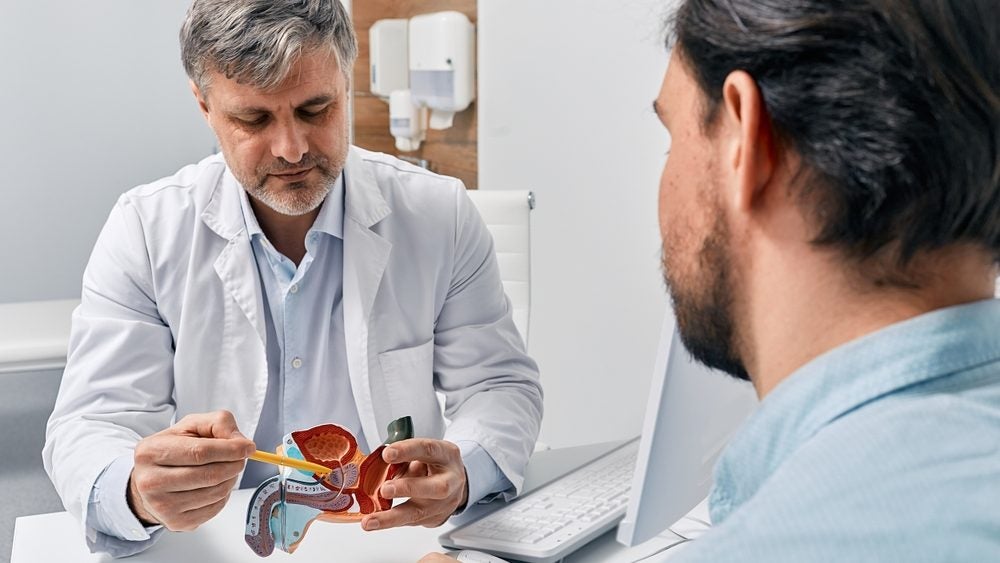Medical Device Network lists the top five terms tweeted on orthopaedic in Q1 2022, based on data from GlobalData’s Pharma Influencer Platform.
The top trends are the most mentioned terms or concepts among Twitter discussions of more than 118 orthopaedic experts tracked by GlobalData’s Pharma Influencer platform during the first quarter (Q1) of 2022.
How well do you really know your competitors?
Access the most comprehensive Company Profiles on the market, powered by GlobalData. Save hours of research. Gain competitive edge.

Thank you!
Your download email will arrive shortly
Not ready to buy yet? Download a free sample
We are confident about the unique quality of our Company Profiles. However, we want you to make the most beneficial decision for your business, so we offer a free sample that you can download by submitting the below form
By GlobalData1. Knee Replacement – 126 mentions
Conservative care for knee osteoarthritis (OA) linked to lower knee replacement rates, link between weight loss and reduced risk of knee and hip replacement, and minimally invasive knee replacement being a successful treatment for knee arthritis, were some of the popular discussions in Q1 2022.
Neil Bradbury, a knee surgeon specialist and orthopaedic consultant, shared an article on surgery being favoured over conservative knee care, such as therapeutic injections, specialist care, or physical therapy, for treating knee OA in the US. According to a Medicare study, older adults suffering from knee OA had lower rates of non-surgical care between 2005 and 2010, the article detailed. However, conservative treatments were linked to lower rates for knee replacement, researchers highlighted.
According to Medicare data, of the more than 988,000 beneficiaries with knee OA, 33% had a knee replacement surgery during the median follow-up period of five years and six months, the article noted. In addition, comparatively fewer beneficiaries were treated by physical therapists, rheumatologists, pain specialists or psychiatrists, as per Michael M. Ward, M.D., MPH, at the National Institute of Arthritis and Musculoskeletal and Skin Diseases. The study also found that more visits to the doctor for knee complaints led to the more likelihood of a knee replacement surgery. On the contrary, physical therapy was linked to lower likelihood of surgery and lower total knee replacement rates across all regions, the article detailed.
See Also:
The term also trended in a discussion around the association between weight loss and reduced risk of knee and hip replacement in an analysis shared by David Hunter, an OA scientists and clinician. The survival analysis using OA data found every 1% weight loss was linked to a 2% reduced risk of knee replacement in people at risk of knee OA, the research highlighted. A total of 4,081 and 4,064 participants were included in the knee and hip analyses respectively. Results revealed that body weight change led to a small, positive, and linear association with the risk of both knee and hip replacement, but in case of persistently painful hips in the latter case.
In another tweet, Nicholas Frisch, a hip and knee replacement specialist, tweeted on total knee replacement being an effective treatment for knee arthritis. Over the years, minimally invasive surgical procedures have been developed to reduce tissue trauma and improve patient outcomes, the article detailed. The minimally invasive knee joint replacement technique, for example, involved much minute incisions than the usual 10–12-inch incisions that is used in traditional knee replacement techniques. The procedure also reduces trauma around the quadriceps muscle and tendon that controls the bending of the knee, from being cut to reach the knee joint. Smaller incisions imply fewer cuts, and hence quicker healing and recovery of the knee, the article noted. Some other benefits of the minimally invasive knee joint replacement surgery include minimal surgical dissection, shorter hospital stay, and reduced postoperative pain.
2. Tendon – 107 mentions
Symptoms of a biceps tendon injury, and the use of mesenchymal stem cell (MSC) therapy in OA and more specifically for tendon repair in the shoulder, were popularly discussed in the first quarter.
Dr Jeff Padalecki, an orthopaedic surgeon, tweeted on symptoms of a biceps tendon injury. The most common and obvious symptom with a tendon tear on the biceps muscle is a sudden and severe pain on where the tendon is torn or injured, he added. Some patients typically hear a pop sound when a tendon tears. Other symptoms related to a tendon injury include weakness on the elbow or shoulder, difficulty in rotating the arm, a bulge due to the fact that the tendon is unable to hold the muscle in position, and a change in appearance of the injured area, Padalecki emphasised.
A torn biceps tendon is generally associated with heavy lifting, and a magnetic resonance imaging (MRI) procedure could help in identifying and confirming the tear, Padalecki added. There are two treatments for a biceps tendon injury, namely a non-surgical one for small or partial tears that can be treated with rest, ice, as well as anti-inflammatory medications. However, a surgical procedure for a bicep tendon tear depends on factors, such as age, activity levels, and severity of the injury, and if non-surgical treatments are not able to cure the condition. Tears associated with distal tendon, for instance, almost always required a surgery, Padalecki confirmed.
Discussions around tendon also involved a review on whether MSC injections that are used for tissue generation can be used in OA and more specifically tendon repair in the shoulder. The analysis shared by Lennard Funk, a shoulder surgeon specialist, highlighted 17 human studies or 94% positive findings for OA, but all the therapy was focused on the knee. Meanwhile, rotator cuff tear studies produced 100% positive findings in three human studies. Results suggested MSC therapy could be used for early stages of OA, and its use for rotator cuff tendon were in the early stages of research but looked promising, the review detailed.
3. Arthroplasty – 79 mentions
Long-term follow-up of total shoulder arthroplasty (TSA) in patients under the age of 60, evaluating the outcome of total hip arthroplasty (THA) for recreational activity, and comparing the use of a suture-based cerclage to a stainless-steel wire cerclage (SSWC) for stabilising the humerus in shoulder arthroplasty, were popularly discussed in Q1.
Dr Fredrick Matsen, a professor at the University of Washington, shared an article on long-term clinical and radiographic outcomes of total shoulder arthroplasty in patients aged below 60. Authors analysed TSA’s of patients having undergone the procedure with a minimum follow-up period of ten years, in a single institution between 1992 and 2014, by a certified orthopaedic surgeon, the article detailed. Results discovered that TSA significantly improved forward elevation from 119 to 146º, external rotation from 21 to 52º, and internal rotation from L5 to L1, the article further noted.
It was also found that TSA significantly increased the ASES scores from 32 to 64 and SST scores from three to seven, while reducing VAS pain scores from seven to three. Meanwhile, there was no significant change radiographically, in mean lateral humeral offset or acromiohumeral interval between immediate postoperative and final follow-up radiographs. Findings also revealed aseptic glenoid loosening to have developed in six cases, two being asymptomatic, the article highlighted.
Arthroplasty also trended in a research paper shared by Lee E Rubin, an orthopaedic surgeon, on the effect of a surgical approach on returning to recreational activity after patients having undergone THA. The research highlighted total hip arthroplasty typically offered relief and functional improvement, with the direct anterior approach (DAA) rate increasing compared with the posterior approach (PA). About 100 DAA patients were compared with 100 PA patients based on age, sex, diagnosis, and the surgical year. The patients were mailed a recreational activity survey, Harris Hip Function, and Hip disability and Osteoarthritis Outcome Score questionnaires.
The research found that 59% of the patients returned to recreational activities of different kinds after THA. The most common activities included cycling, walking, and exercise classes. The review also revealed that patients undergoing THA using the DAA participated in more recreational activities than patients using the PA.
In another tweet, Peter Millet, a shoulder surgeon and sports medicine specialist, shared a study comparing the use of a tensionable suture-based cerclage as an alternative to stainless-steel cerclage fixation for stabilising a humeral osteotomy during shoulder arthroplasty. It was found that in the first part of the study, load to 2-mm displacement was significantly higher for the double-looped tape cerclage (DLTC) construct compared to the SSWC construct. Additionally, load to failure was higher with the DLTC construct compared to the SSWC construct, but the final gap displacement did not differ majorly. Therefore, the DLTC construct was a more viable option for fixation of periprosthetic fractures or osteotomies of the humeral shaft in shoulder arthroplasty, the study confirmed.
4. Meniscus – 70 mentions
The diagnosis and repair of meniscal ramp lesions, and the LaPrade technique for meniscus root repairs, were some of the popular discussions in Q1 2022.
Clayton Nuelle, an orthopaedic surgeon, shared a research paper on meniscus ramp legions, its anatomy, incidence, diagnosis, and treatment. Nuelle further tweeted that meniscus ramp tears are often missed on both MRI and arthroscopy, but they can occur 9-16% of the time with anterior cruciate ligament (ACL) tears. The paper further detailed that meniscus ramp legions are more frequently related to ACL injuries than previously documented. However, a ramp lesion can be effectively diagnosed with the help of an arthroscopic evaluation that probes into the posterior horn of the medial meniscus, the paper noted.
The different types of treatments available for meniscus ramp lesions include non-surgical management, inside-out meniscal repair, or all-inside meniscal repair. Researchers state that in the case of an isolated ramp lesion, a standard meniscal repair rehabilitation procedure should be followed. However, in the case of a concomitant ACL reconstruction (ACLR), rehabilitation should be as per the designated ACLR postoperative procedure, the research detailed.
Meniscus also trended in an article shared by Robert LaPrade, a complex knee surgeon and sports medicine specialist, on the meniscal root injury and the LaPrade technique for meniscus root repair. Meniscal roots are very important for joint health, the article detailed. If torn, they could lead to early onset arthritis, insufficiency fractures, the development of bony edema, and the failure of concurrent cruciate ligament reconstruction grafts.
A meniscus root repair involves the isolation of the root, and placing a minimum of two sutures in the remaining meniscal attachment, thereby trying to move it back to a more anatomic position. After the sutures are placed, a small diameter tunnel, of about five millimetres, is reamed to the meniscal root attachment site, the sutures are then pulled down the tunnel and tied over a button on the anterior cortex of the tibia, the article noted.
The LaPrade technique, on the other hand, involved a comprehensive approach to fixing the meniscus tear in order to allow maximum healing. For example, LaPrade noticed that when the meniscus was not pulled back into the joint during meniscus root repairs, patients continued to experience pain, the article highlighted. Likewise, LaPrade suggested to use a button to fix the meniscus sutures or tape on the tibia that would help minimise the loosening of the repair, as against tying the sutures on the bone, with cyclic loading, which would force the sutures to cut into the bone and the repair would become loose with time.
5. Arthritis – 53 mentions
Foods to avoid during arthritis, managing arthritis pain with exercise, and first symptoms of psoriatic arthritis, were popularly discussed in the first quarter.
Brian Cole, an orthopaedic surgeon and sports medicine specialist, shared an article on simple dietary changes that can reduce inflammations and provide relief from arthritis pain. The article detailed that some foods go a long way in reducing the severity of symptoms in patients suffering from OA and inflammatory arthritis, apart from improving their overall quality of life. For instance, ten foods that should be avoided during arthritis include salt, added sugars and sweeteners, red meat, high-fat dairy and cheese, omega-6 fatty acids, fried and canned foods, refined carbohydrates, gluten, and processed foods.
Arthritis also trended in discussions related to arthritis pain naturally limiting activity and pace in adults in an article shared by Nicholas Frisch. The article detailed how arthritis pain should be managed with exercise, and how over time inactivity or no exercise could actually lead to more issues, and total loss of mobility according to recent research. Data from the Centers for Disease Control and Prevention (CDC) further revealed that approximately 58.5 million adults have been diagnosed with some form of arthritis, with OA or the wear and tear arthritis being most common.
However, exercise is recognised to be a key treatment for arthritis pain, the article noted. Some of the benefits of exercises included increased blood circulation to the cartilages cushioning the bones, strengthening the muscles around the joints, helps in reducing weight and thereby relieves the joints from excess trauma, contributes to better mental health, and finally helps manage stress and improve sleep patterns. In particular, range-of-motion, strengthening, and aerobic exercises are recommended for managing arthritis pain, the article highlighted.
In another tweet, Dr John Knight, a hand and wrist specialist, tweeted on psoriatic arthritis, and its typical symptoms such as nail pitting, joint aches and swelling, stiffness, and more. Knight explained that psoriatic arthritis may affect those suffering with psoriasis, which is characterised by red, patchy skin that usually is capped with silvery scales. Some of the first signs of psoriatic arthritis to look out for include joint pain, joint swelling, nail pitting and other changes with the nails, finger or toe swelling, itchy, dry or red eyes, fatigue, and reduced range of motion, Knight added.










Related Company Profiles
MSC Co Ltd
O-A, INC.
ACLR, LLC
Daa Plc
CDC SpA